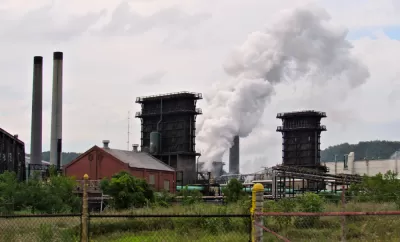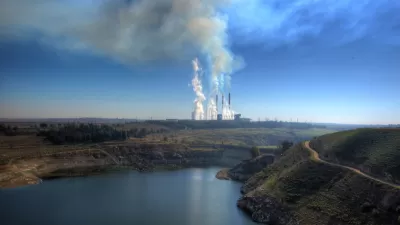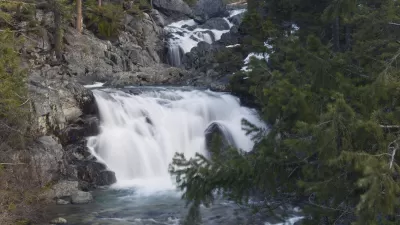The U.S. Environmental Protection Agency estimated its new rule change will result in up to 1,258 tons of additional emissions of hazardous materials every year.

"The Environmental Protection Agency (EPA) on Thursday finalized a rule that could reclassify many 'major' sources of pollution as minor ones, allowing facilities to abide by less-stringent emissions standards for dangerous substances such as mercury, lead and arsenic," report Rebecca Beitsch and Rachel Frazin.
"The rule allows major sources to become reclassified if they now meet the hazardous air pollutants guidelines in place for the smaller “area” polluters — producing 10 tons per year or less of a single toxin, or 25 tons a year for facilities that emit multiple toxins," explain Beitsch and Frazin in more detail.
The EPA estimates the rule change "will result in up to 1,258 tons per year of additional emissions of hazardous air pollutants," according to the article, and 3,900 polluters are now eligible for reclassification.
John Walke, a senior attorney with the Natural Resources Defense Council, is quoted in the article criticizing the rule change, saying it's a gratuitous example of "extreme ideology over public health, common sense and the law." The article also predicts that environmental groups are likely to challenge the rule change in court.
FULL STORY: EPA finalizes rule allowing some major polluters to follow weaker emissions standards

Study: Maui’s Plan to Convert Vacation Rentals to Long-Term Housing Could Cause Nearly $1 Billion Economic Loss
The plan would reduce visitor accommodation by 25,% resulting in 1,900 jobs lost.

North Texas Transit Leaders Tout Benefits of TOD for Growing Region
At a summit focused on transit-oriented development, policymakers discussed how North Texas’ expanded light rail system can serve as a tool for economic growth.

Alabama: Trump Terminates Settlements for Black Communities Harmed By Raw Sewage
Trump deemed the landmark civil rights agreement “illegal DEI and environmental justice policy.”

How Community Science Connects People, Parks, and Biodiversity
Community science engages people of all backgrounds in documenting local biodiversity, strengthening connections to nature, and contributing to global efforts like the City Nature Challenge to build a more inclusive and resilient future.

Alabama: Trump Terminates Settlements for Black Communities Harmed By Raw Sewage
Trump deemed the landmark civil rights agreement “illegal DEI and environmental justice policy.”

Dear Tesla Driver: “It’s not You, It’s Him.”
Amidst a booming bumper sticker industry, one writer offers solace to those asking, “Does this car make me look fascist?”
Urban Design for Planners 1: Software Tools
This six-course series explores essential urban design concepts using open source software and equips planners with the tools they need to participate fully in the urban design process.
Planning for Universal Design
Learn the tools for implementing Universal Design in planning regulations.
City of Santa Clarita
Ascent Environmental
Institute for Housing and Urban Development Studies (IHS)
City of Grandview
Harvard GSD Executive Education
Toledo-Lucas County Plan Commissions
Salt Lake City
NYU Wagner Graduate School of Public Service





























